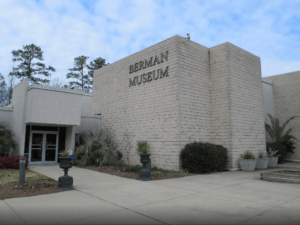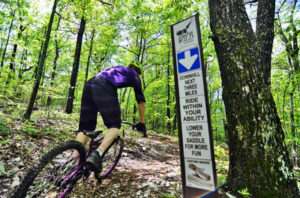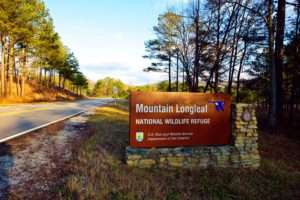Centered around Boiling Spring, the Choccolocco Creek Archaeological Complex once consisted of at least three earthen mounds, a large stone mound and a large snake effigy (representation), also made of stone. The largest earthen mound once stood high above the Choccolocco Creek floodplain. The earliest earthen mound construction at the site began during the Middle Woodland period (ca. 100 BC to AD 250) when the site became a regionally important ritual center connected through cultural exchanges with groups living on the Gulf Coastal Plain to the south and the Tennessee Valley to the north. Mound construction appears to have resumed at the site around AD 1100 when the inhabitants of the Choccolocco Valley were closely connected with the people of the Etowah site near present-day Cartersville, Georgia.
Prior to the 1830s, the Choccolocco Creek Archaeological Complex was the location of the ceremonial ground of the Abihkas, one of the most ancient tribal towns within the modern Muscogee (Creek) Nation. Ethnographic research conducted by the Smithsonian Institution in the late 19th and early 20th centuries indicates that the stone constructions associated with the complex are associated with oral histories that tell of a town “lost in the water.” The large stone mound is thought to be the result of “burden” stones carried by the Abihka in remembrance of those lost in a great flood.
This site is very important to numerous Southeastern indigenous tribes who assert an ancestral connection with those who built and occupied Alabama’s ancient mounds. The earthwork landscapes and the objects and information recovered from them reveal a rich cultural tradition that still thrives today among these tribes. Our indigenous mound sites represent a heritage for all Alabamians to cherish, and it is important that we protect and preserve them for future generations.








